
Backpacking as a mode of travel is a definition of identity. If you feel like a fish taking to water despite that cumbersome load on your body, then it is for you.
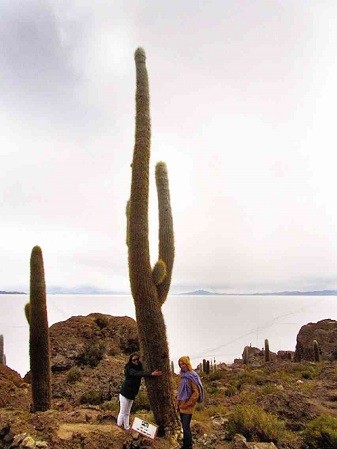
I have never backpacked in my life, but my inner adventurer egged me to choose an “off the beaten track” holiday this year. And so, while I could still walk the talk, I decided to pretend that I was to the backpacking set born, and could travel in comfort even with heavy baggage, to no less than the extreme heights of Bolivia.
The altitude
My daughter Gabbi and I took off from Miami for La Paz, landed at dawn at 4,150 meters (13,615 feet) above sea level in El Alto, the highest city in the world.
I started gasping for air as we claimed our baggage from the airport terminal building’s sole conveyor machine. Willing myself to move in slow motion and to take deeper breaths, I focused on a prime benefit of this exercise. As my Russian homeopathic doctor once told me, “Athletes train in high altitude. High mountain oxygen can make you look younger.”
“Be sure you rest the day you arrive. Take only soup and salad on your first meal, and coca tea in the mornings,” Consul Juan Carlos Valdivia cautioned while checking on us upon our arrival. Visions of my life abruptly ending from some acute altitude mountain sickness, like pulmonary or cerebral edema, kept me obedient to the important advice.
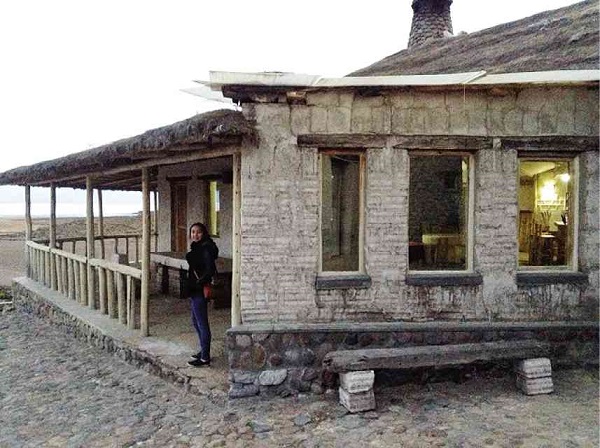
Thus I survived my first day.
Populist government
The road to our hotel, The Camino Real Suites, was beginning to come to life as the sun rose over the church spires and buildings that were dwarfed by the snow-covered Mount Illimani. On the other side of the narrow canyon where the city is built are the ramshackle homes of the poorer inhabitants.
For the indigenous people of Bolivia comprising the majority of its population, working life in La Paz consists of selling food, clothing and domestic livestock, all of which are conducted largely by woman merchants in their traditional attire in the streets, practically transforming the city into a huge marketplace vibrant with color.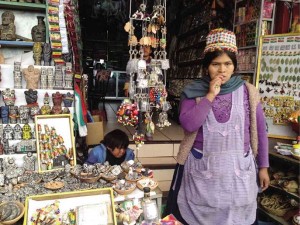
Bolivia is a small country and has a socialist system of government. So there he was, ubiquitous and bigger than life: President Evo Morales, an Aymara and the first indigenous president in the history of Bolivia, keeping close to the people via numerous propaganda billboards along the roadsides.
As in most South American countries with a democratic socialist and populist government, the leadership is an American basher. The US ambassador was expelled because President Morales accused the American government of using the US Drug Enforcement Administration to manipulate the Bolivian government.
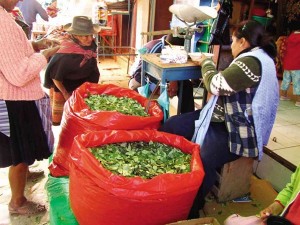 Morales chaired the Confederation of Coca Producers in Cochabamba before he was voted President with unprecedented margin in the country’s history.
Morales chaired the Confederation of Coca Producers in Cochabamba before he was voted President with unprecedented margin in the country’s history.
The coca industry is central to Bolivian culture and economy, since coca leaves are widely used in rituals and as an antidote to altitude sickness. Thus, it’s a profitable means of livelihood for the campesinos.
City tour
On days two and three, we took walking tours of the city, focusing on the colonial city center with the usual touristic areas found in Spanish colonies, such as the Cathedral, the Presidential Palace and the Legislative Palace around Plaza Murillo.
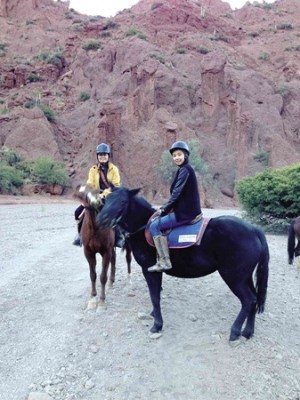
The highlight was a visit to the Mercado de Hecheria, or Witches’ Market on Calle Jiminez, the most unique market I have been to.
It is a fascinating place as it gives great insight into Aymara sacred rituals. The love lotions and potions to keep and attract the male species, herbs, spices, Llama fetuses, dried frogs and snakes, are among the myriad ingredients used in the practice of witchcraft, or as offerings to Pachamama, known as Mother Earth.
For whatever it was worth, I purchased a lucky talisman to grant me wealth, a relief from the macabre rituals that left me spooked.
On our last evening in La Paz, we were feted by Honorary Consul Valdivia and his charming wife, Ducky Olbes, in a new restaurant, Gustu. It was established by chef Claus Meyer (also the co-founder of Noma, a three-Michelin, best in the world restaurant in Copenhagen) to promote tourism through Bolivian food culture and its biodiversity.
For starters, I had “egg in a nest of charque and wild palm hearts” while my main was “soft pork belly among onions and pears.”
This fine-dining restaurant, I am certain, will earn its own Michelin stars. But more significantly, it is training underprivileged Bolivian youth in world-class food and beverage service.
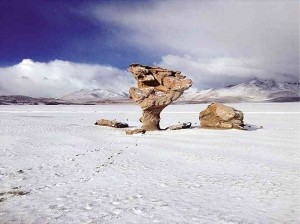
Lake Titicaca
On the fourth day, we drove three hours before the sun rose to Lake Titicaca, a high-altitude lake that straddles the border with Peru.
This immense lake, high up at 12,507 feet on the Andes, is the largest navigable lake in South America. We boarded the Titicaca Catamaran for an overnight trip around the lake.
Titicaca played a major role in the country’s religious and ancestral heritage. Just off the Copacabana Peninsula, we took a colorful rowboat to the Isla Del Sol, one of the most religious sites in the 16th century, revered as the place where the sun and moon were created and where the legendary Manco Capac founded the Inca dynasty.
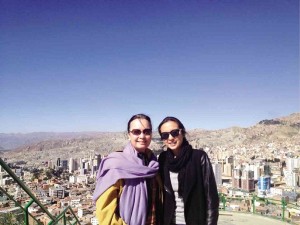
The myth of the Incas got me confused because when I was in Peru, Manco Capac also founded the Inca Dynasty in Cusco.
As soon as we docked, we trekked up the rocky hilly terrain on the northern side, to arrive in Challapampa, where an isolated indigenous community resides.
Shedding our layered clothing, we hiked uphill along the Inca trail, which took us to the remains of the Temple of the Chinkana, an Inca labyrinth worshipped as the birthplace of the first Incas.
Replete with historical significance, Lake Titicaca also boasts a magnificent hilltop vista that encompasses rocks jutting dramatically from the sea below and resplendent snow-capped mountains lacing the distant horizon.
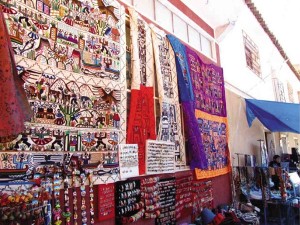
Colonial heritage
The historic city of Sucre, in the central part of the country, is the constitutional capital of Bolivia. It lies on an elevation of 2,810 meters (9,219 feet).
On our sixth day, already acclimatized with the altitude, we effortlessly toured the city on foot to visit museums, churches and the oldest university, Universidad Mayor Real y Pontificia de San Francisco Xavier de Chuquisaca, which was founded in 1624 to educate the families of the wealthy of South America in law and theology.
The most beguiling place in Sucre is Tarabuco Market. On a Sunday, this small and old colonial town comes alive with bursts of colors from the weaves and the traditional costumes of the Yampara community.

In this open-air market, the Quechua and Tarabuco people come from the surrounding villages to sell their cattle at auction along with beautiful weaving, clothing, food and other stuff.
As I collect handwoven indigenous textiles, I acquired an old piece that was woven in Colcha, a town between Potosi and Oruro. I noted that markets are not just a venue for inexpensive finds, but also a setting to observe the local nuances in trading. I hold an interest in weaves because it sustains an industry that conserves a people’s culture.
Once a wealthy town
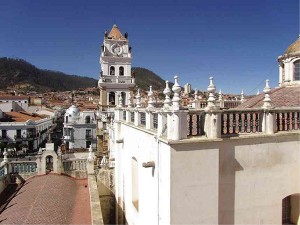
On the eighth day, we took a three-hour trip by public bus to Potosi and checked in at a hostel in town, Colonial. It was the best by Potosi standards, but it reminded me of an inn I stayed in once in Lake Sebu, South Cotabato, where I had difficulty falling asleep on a hard bed.
Fortunately though, the Colonial was a block away from the most important attraction, the Museo de la Moneda, the mint that produced silver Spanish coins that were shipped to the Spanish monarchy and to the colonies of Spain from 1556 to 1783. The museum guide explained that colonies including the Philippines once used the silver coins produced here.
This mining town lies at the foot of the silver ore, the cone-shaped peak of Cerro Rico, where descendants of Indian slaves run the mines. The mountain has become porous after hundreds of years of mining, such that it is believed it will soon collapse. Once a town of incredible wealth, it is now decrepit and forlorn.
Going south
After an early breakfast on our ninth day, we drove southeast to Tupiza. Throughout the five-hour drive, we passed tiny villages with not a soul in sight. This was to be typical of the rest of our tour.
The drive to Tupiza had an incredible scenery of endless red canyons, green valleys, cactus forests and gorges. But going south in an old-model Land Cruiser with Victor, a friendly but over-confident driver who assured us that he knew the route with his eyes closed, could mean your expectations of a pleasant and leisurely ride could also go south.
Soon we were on dirt roads with no markers, weaving around deep ravines with only the tracks of vehicles that had gone before us to indicate that we were on the right path.
The world’s most dangerous roads are arguably in Bolivia, and Victor and our English-speaking guide, Alvaro, had been contracted for the next five days through to our journey’s end at the Atacama Desert on the Chilean border.
Sitting with our eyes shut in fear, especially through the narrowest part of the road where the ravines were most treacherous, we helplessly entrusted our fate to these two rough-and-tumblers. We begged the heavens for safety as we braved it out on this initial five-hour ride that truly gave “off the beaten track” a whole new meaning.
After checking in at Hostal Mitru in the tiny town of Tupiza, we went on horseback on a three-hour trail into Quebrada de Palmira, a deep, cactus-strewn ravine amid a most dramatic desert theater that had rock formations carved out by wind erosion, creating a spectacular backdrop.
No doubt, Tupiza is one of the most beautiful places in Bolivia. Its multicolored geographical variety transported me back to the adventures of Butch Cassidy and the Sundance Kid, particularly when they stole the remittance of Compania Aramayo in 1908 and were killed in a shootout in San Vicente.
Caught up in the magnificent texture and majestic visuals of the place, I realized that Butch and The Kid came to mind because, by then, we had gotten used to Victor and Alvaro, whose driving definitely redefined our sense of adventure to include the daring and the dangerous!
Elemental places
On our third day of rising with the sun, we drove another five hours, passing through almost extraterrestrial scenery until we reached El Sillar (carved mountains formed from erosion), then passing through flat valleys with vicuñas, alpacas and llamas feeding on grass and festuca at Cruce de Los Vientos, an area steeped in a natural phenomenon of cross winds.
After an overnight stay at Tayka de los Volcanes in San Pedro de Lipez, and exhausted from a trek to the awesome natural rock formations of Jatun Organo and Astillas, we continued on in our 4×4 toward the Salar de Uyuni through the off-road gringo trail, passing through tiny towns. Because there is barely anything new to see in these towns, anyone who likes to fill his/her days with novelty will be struck with admiration for the peasants who diligently tend their llamas or work in the mines year in and year out.
But the Salar is a unique landscape! It is the earth’s largest salt desert, with 4,633 square miles bearing 10,000 sq km of salt at 12,000 feet above sea level. Arriving at its border, we found the sight simply breathtaking, almost in defiance of the arid desert we came from.
The expanse was endless and pristine white, from salt formed from a prehistoric lake. What a perfect time to be there in the dry season, as the plains were completely flat, with dry salt rising 10 meters thick in the center and hard enough for our 4×4 to go over.
Magnificent landscapes
We left early at dawn on our 11th day toward Ojo de Perdiz, passing through the lagoons of Cañapa, Hedionda, Chiarkota, Honda and Ramaditas where we saw three kinds of rare flamingos, with the James variety as the most common. We were told that the flamingos’ color is actually gray and that they get their pink color from the plankton they eat from the lagoon.
Though desolate, this region is the most colorful in the country. Even the lakes were red and green from minerals created by volcanic activity for millions of years. Tones of reds, yellows and purple highlighted an amphitheater of tundra and volcanoes as we drove across its isolated valleys.
We were on the road for almost eight hours, during which we were mostly occupied with taking pictures of our extraordinary surroundings. By nightfall it started to snow heavily, obliterating the road tracts to the Hotel Tayka Desierto.
More cardiac moments as we sat silently, scared stiff that we would suddenly fall into a ravine. There were no lights as we ascended the Siloli Desert, the highest desert in the world, but Victor explained that he recognized the trees en route by their branches. We were sure that he spoke from experience, but in that long moment in dark, unfamiliar territory, his assurances sounded weak and frightfully unfounded.
Our fears were validated when we finally reached the hotel, where the staff was overjoyed that we made it through. They evidently spent the past hours fearing the worst for us—the likes of being stranded or buried in the snow! Their warm welcome was a hearty meal of home-cooked cuisine.
A fitting finale
Our last five days were, indeed, a solitary and, at times, desolate journey. We were the only backpackers on empty roads that rose much closer to the clouds than most other places on the planet ever could. It might have been very lonely out there, if we were not so focused on covering as much of this totally different part of the world as our limited time allowed.
The morning after, as I stepped out of our hotel—the only structure in the middle of nowhere—the desert and surrounding mountains and volcanoes were covered in thick inches of glistening snow. We were in the midst of the Eduardo Avaroa National Reserve of Andean Fauna.
It was total magnificence. And with no one else around, it was a magical moment that felt like we were the first four people to be privileged with a sneak peek onto a fresh new planet that God had just finished sculpting.
When we were at last ready for Chile, I could not think of a more fitting way to end our Bolivia experience, than to soar on such an edifying spiritual note of awe and gratitude to The Great Designer of all that we had seen.
The author was the 1973 Miss Universe and is now a culture advocate, heading Ballet Philippines.








































